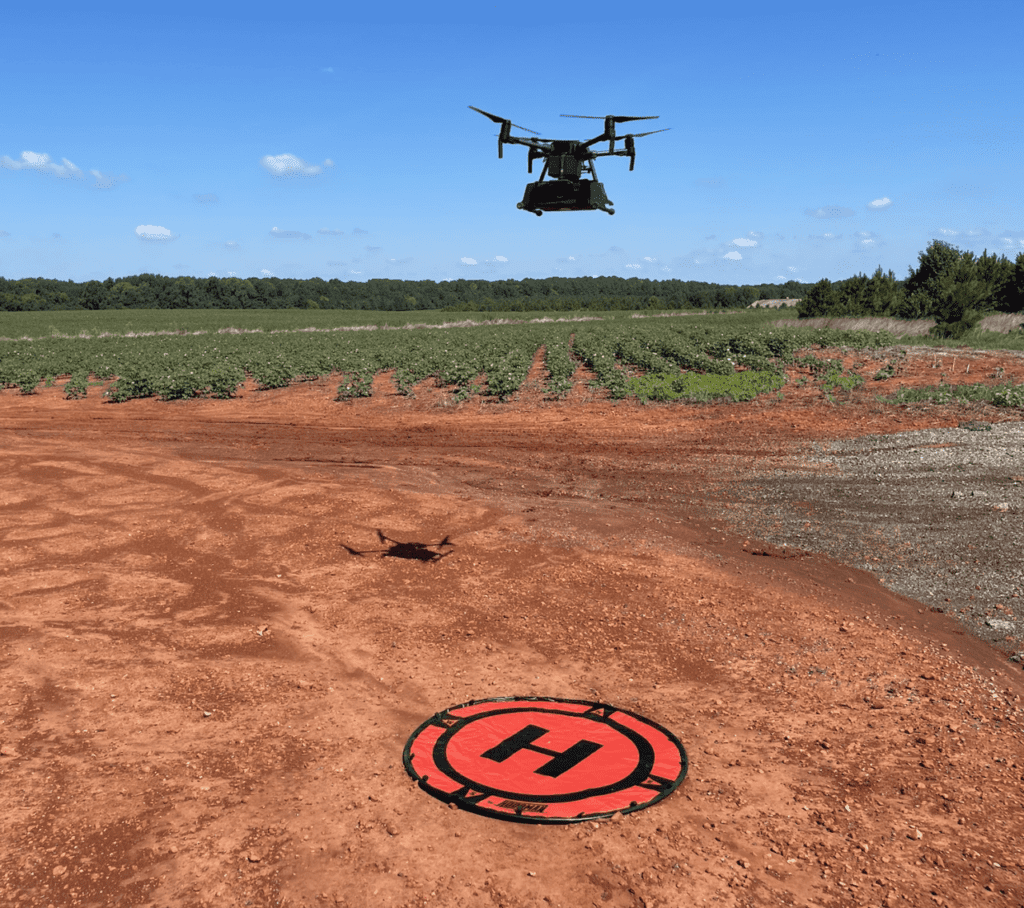
The CEO of Skyfire Consulting offers a positive outlook on the drone industry, explaining that the end goal is much greater than simple package delivery. (Photo: Skyfire)
This article was contributed by Matt Sloane, founder and CEO of Skyfire Consulting.
There is a bloodletting happening in the technology sector right now, from Google to Microsoft to Meta and dozens of other companies, but the one that caught my eye last week was Amazon announcing it was laying off 18,000 workers—and specifically, upwards of 80% of its flight operations personnel at Amazon Air, their drone delivery business.
Another report just a few weeks ago from management consulting behemoth McKinsey & Company found that as it is organized today, package delivery by drone is not nearly as cost-effective as electric vehicles doing multiple deliveries in a single run, or even as cost- and carbon-efficient as a single electric vehicle delivering a single package.
All of that—for drone company investors, drone company employees, industry watchers, and drone CEOs like me—could be looked at as bad news, or at the very least, as a signal that the industry is not “there yet.”
Truth be told, that was my initial reaction. The more thought I gave it, the more I realized that we have it all wrong.
Decades of research in microprocessors and tiny cameras, radar sensors, and unmanned traffic management systems… and all we get is dog food delivery in 30 minutes or less from a flying Amazon van?
If that was the end-state goal, is it even worth the risk of putting “toy airplanes” potentially in the way of commercial airliners or medical helicopters?
When you put it that way, the answer is a resounding “hell no.”
Cool as that would be, and as futuristic and Jetson-like as it sounds, it was never about package delivery.

In places like Chula Vista, California, and Brookhaven, Georgia, so-called “drone first responder programs” are getting drones on the scene of 911 calls within 120 seconds. (Photo: Skyfire)
There’s a saying in the drone industry—and probably dozens of others—that “just because you can, doesn’t mean you should.”
Dozens of people looking to fly COVID tests around town in mid-2020 were told as much by the FAA: if you can drive it, reasonably, drive it. The same goes for temperature monitoring in large crowds, and spraying disinfectant in heavily-trafficked public places. If you can do it from the ground, you should.
And while I don’t doubt there will come a time where I order something on Amazon Prime and stand eagerly on my front lawn, waiting for it to drop on the Prime Air landing pad, the point is that this shouldn’t be our only endpoint, our only measure of success.
From where I sit (or fly), drones hold the potential to bring automated external defibrillators to a cardiac arrest patient’s side in under three minutes. Did you know that the average survival rate for cardiac arrest outside of a hospital is less than 5%?
Drones could also bring an overdose reversal kit to a child wondering why their parent isn’t breathing, or reverse a potentially life-threatening allergic reaction to a bee sting for a kid on a soccer field.
Is that worth adding a small amount of risk to our national airspace system calculus? You’re damn right it is.
Some of this is hypothetical, but much of it is already happening. In places like Chula Vista, California, and Brookhaven, Georgia, so-called “drone first responder programs” are getting drones on the scene of 911 calls within 120 seconds.
This is not Big Brother—but it may mean the difference between a kid playing with a toy gun getting shot by police, and those officers knowing before they even arrive that the child’s gun is a toy. Or it could mean a police officer knowing he or she was walking into an ambush long before they set foot on a dangerous crime scene.
The truth is, a drone is only as good as the camera or payload that you put on it, much like a tractor. Could you put an Amazon Prime box on it full of lightning cables that you must have in 30 minutes or less? Yes, but am I more concerned about having a drone in my community that could bring a defibrillator to my grandfathers’ side on the golf course when he collapses? Also yes.
So while it’s tempting to see news of Amazon Prime’s layoffs—and reports like the McKinsey paper about how drone delivery is cost-inefficient—as bad news, let’s instead all take a minute to reflect on how far this industry has come in only 10 years thanks, in part, to Amazon, Google, Mattternet, Zipline, and others. And let’s take this opportunity to call on the FAA, the Department of Transportation, and our local, state, and federal elected officials not to wait any longer to help our country’s first responders put that very same technology into effect without delay.
If those same investors, regulators, industry watchers, and drone company CEOs wait for package delivery as a signal that “the industry is ready,” we have missed the mark on so many important uses of this amazing technology.
Matt Sloane is the CEO and founder of Skyfire Consulting and its parent company, Atlanta Drone Group. He is an inaugural member of the National Fire Protection Association (NFPA) technical committee on drones, a technical advisor to the International Association of Fire Chiefs technology council, and an FAA-certified pilot.